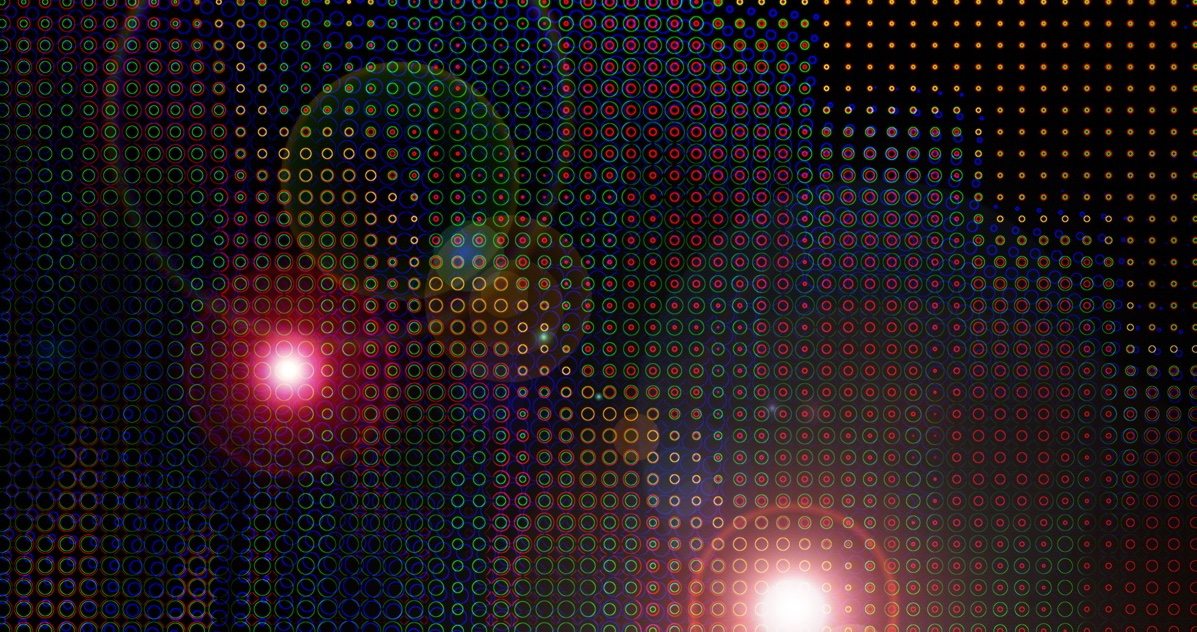Flat panel display technology continues to evolve. Once upon a time, we had Plasma and LCD TV sets. LCDs were adopted for use in iPhones and iPads, but they require backlighting. Then we had OLEDs (used in the Apple Watch). Now there’s Quantum Dots and microLEDs. Here’s a non-technical introduction that will help you become familiar with the technologies.

Liquid Crystal Display (LCD). This is an array of liquid crystals between two polarizing filters at right angles to each other. The crystals themselves do not emit light. The transmission of the crystals and the array element is determined by a grid electric field at each pixel and the result passes red, green or blue light. The crystal of each color is illuminated from behind. In the beginning, side lit fluorescent tubes were used. Nowadays, the backlighting is provided by white LEDs—which are really a mixture of red, green and blue LEDs (see below).
Modern TVs, computers displays, iPhones and iPads use LCDs of various designs. Drawbacks: LCDs must be backlit, drawing additional power and can’t be as thin as, say, OLEDs, which are self-emitting. Also, because LCDs work by blocking light, never with 100 percent efficiency, the pixels can never reach the holy grail of extreme black levels.
Light Emitting Diode (LED). An LED display is an array of semiconductors that emit light, depending on the semiconductor material, at specific colors when a current is applied. Early LEDs were generally red and green, and it was only in the 1990s that blue commercial LEDs were available. That’s led to the emergence of (aggregate) white light LEDs to replace fluorescent backlighting and, later, Blu-ray players. LEDs are mostly used for signage, indicators and illumination, LEDs last for a very long time and are very power efficient.
Organic LED (OLED). Similar to a conventional LED, an OLED is an electroluminescent organic compound that forms a semiconductor and emits light when a current is applied. The design of the material leads to red, green or blue light. Like LEDs, they emit their own light and don’t require a backlight. Hence black levels are perfect.
OLEDs have traditionally been expensive in the past to manufacture and only LG and Samsung made them. (Sharp is now added to the mix.) Today, the cost has come down dramatically, and now even OLED TVs of modest size are very affordable. The Apple Watch uses OLED technology. However, TV makers are very experienced with LCD technology and the added thickness of a backlighting layer isn’t as critical. Entry level pricing is important for 4KTVs.
Plus, the advent of 4K + HDR technology requiring high brightness levels has weighed somewhat against OLED displays. OLEDs come into their own on small displays where the total cost is low, thinness is paramount, and the display is generally darker, leading to reduced power consumption compared to LCD. Also, there are prospects for flexible OLEDs down the road. Apple is rumored to be thinking about using OLEDs for the iPhone in 2017.
Quantum Dots (QD). These are very small, conducting crystals. They are so small, 2 to 10 nanometers in size, that their optical properties change (for the better) compared to larger crystals. They are self-illuminating when a current is applied. They can produce very bright light, but have not been developed, in isolation, for commercial products, that I know of.
“Quantum Dot” 4KTVs actually use the QDs to produce the required backlighting for LCD panels, and those TVs are, in principle, still LCD displays. The quality of the backlighting from QDs is superior to that from white LEDs in terms of brightness and color gamut. Again, this is great for HDR technology in TVs in that respect, but not so great for TV black levels. QDs are stable and, like LEDs, have a long life.
There is no reason, in principle, that Quantum Dots couldn’t be used for iPads and iPhones, and there are some other products now on the market that use QDs. Paul Gagnon, from IHS, told me:
I think there are maybe only a handful of [small] devices that use Quantum Dots. I think that’s because it’s a relatively new technology and the implementation is still being worked out. Also, when you think about working on the color purity, that’s more critical in the entertainment space, as in television, than in a mobile display. So maybe manufacturers have thought it was not worthwhile putting the investment into Quantum Dots for small displays.
Or maybe there is something even better for small devices….
MicroLED or mLED. This is a relatively new technology, but has been said to be a game changer. From Wikipedia, “As the name implies, mLED displays consist of arrays of microscopic LEDs forming the individual pixel elements. Compared to the widespread LCD technology, mLED displays offer far greater contrast, much faster response times, and would use less energy.”
Lately, there have been rumors that Apple may be pursuing microLED technology as a result of its acquisition of LuxVue Technology in 2014. We’re likely to hear much more about this technology in the coming years.
Final Words
It’s important to remember that there are a myriad of engineering trades when a company selects a display technology: design maturity, cost, the ability to manufacture at the desired scale in numbers and size, power consumption, thickness (for small devices), brightness in daylight conditions (or not), color gamut, longevity of the material, and suitability for specific product designs.
That’s why you’ll see some products like 4KTVs focusing at first on certain technologies while small, personal devices may use another. In time, as technology develops in factors such as applicability, cost and manufacturability, you’ll see a company transition to a different technology or, perhaps, invoke multiple different designs at different price points.
References
- Quantum Dot vs OLED, which is the better display?
- Everything You Need to Know About OLEDs, Quantum Dots & iPhone, Part I
- Everything You Need to Know About OLEDs, Quantum Dots & iPhone, Part II
_________________________
Teaser image via Shutterstock.

John:
This review is much appreciated, as are the links to the supplementary articles.
As ever, I suspect that Apple will only migrate to a new technology once it achieves a consumer-ready consistency, and hopefully, however intriguing the underlying tech, not before.
Excellent summary, John. This is why I read TMO.